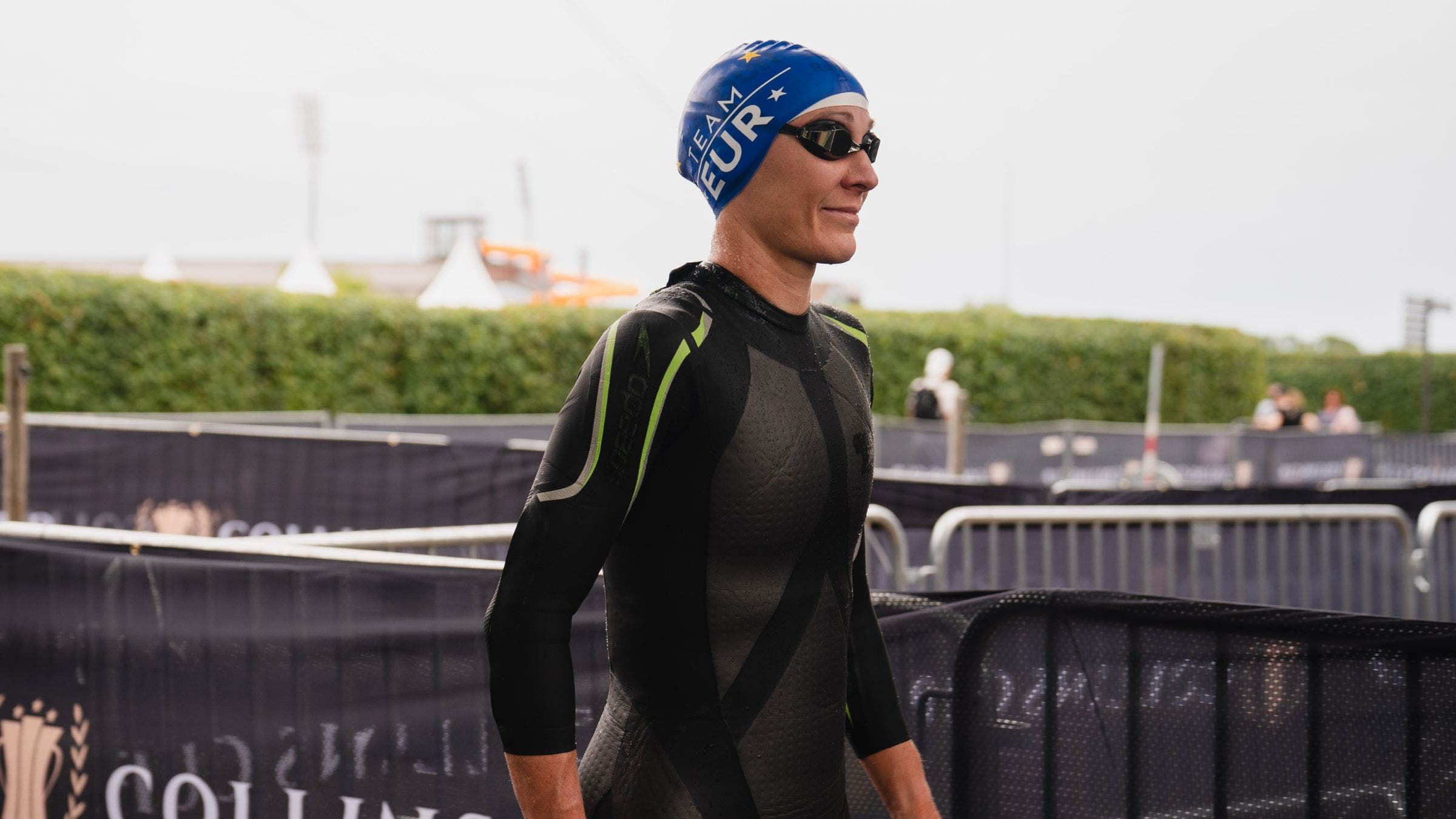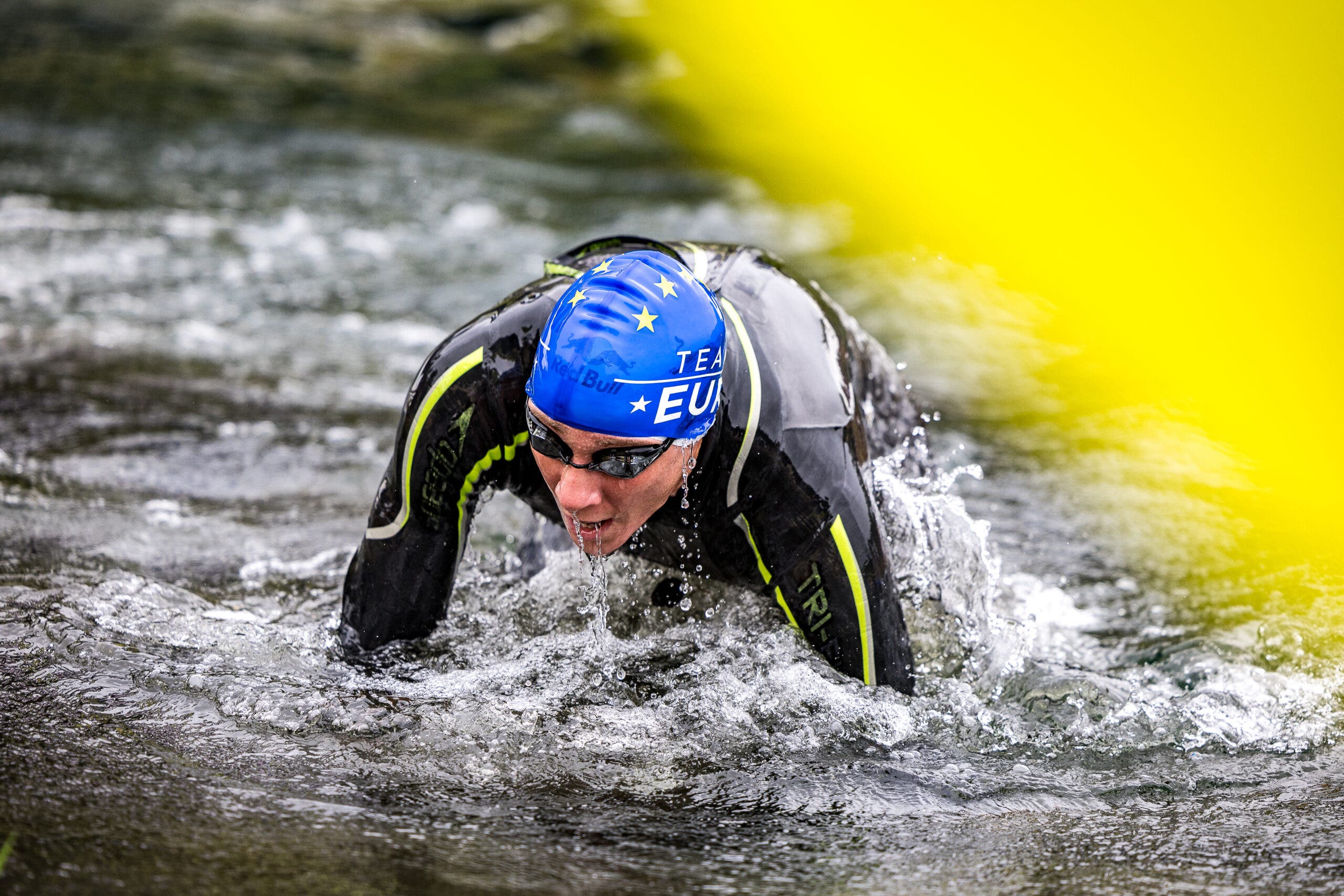Daniela Ryf and the Curious Case of the Banned Wetsuit

(Photo: Professional Triathletes Organization)
Daniela Ryf has admitted she wore a banned wetsuit in last month’s and last year’s Collins Cup and Ironman Switzerland in July.
But the five-time Ironman world champion, who played a starring role in helping Team Europe retain the Collins Cup in Slovakia, says she wasn’t aware that the Speedo Tri Elite suit was outlawed until informed by Ironman global director of rules and officiating Jimmy Riccitello after this year’s race.
“I was not aware the model is prohibited as it is not on an official prohibited list and I would have never worn it otherwise,” Ryf said. “I fully accept this decision and I also guaranteed I will never wear this model for any race again. It was never my intention to use a product which isn’t allowed. I always loved the Speedo wetsuits for their flexibility, and the panels were not the reason I wore it.”
The Speedo Tri Elite wetsuit falls foul of the rules because it incorporates raised panels on the forearms which are designed to help catch more water with each stroke and propel the swimmer faster through the water. The wetsuit was discontinued in 2013.
RELATED: What Matters (And What Doesn’t) When Buying a Wetsuit
“Although an old FAQ on the Ironman website lists the Speedo Tri Elite wetsuit as prohibited, the Ironman competition rules do not expressly prohibit the Speedo Tri Elite wetsuit or ‘catch panels’,” Riccitello explained.
“When an issue is not specifically addressed in Ironman’s rules, Ironman follows World Triathlon rules with respect to equipment legality. World Triathlon rule 4.12(d) specifically requires that ‘the most external part of the wetsuits will fit to the athlete’s body tightly… ‘ and therefore the Speedo Tri Elite wetsuit would be prohibited due to its ‘catch panels’.”
Riccitello confirmed that no further action would be taken against Ryf because technical officials at Ironman Switzerland – Ryf’s most recent Ironman victory – did not notice the illegal wetsuit, nor did any athlete protest the wetsuit on race day or otherwise.
“Ironman is reluctant to retroactively disqualify an athlete for violating a rule that was not clearly stated in the Ironman rules or the event-specific athlete guide, and was not noticed by event referees or via an athlete protest,” he added. “As Daniela stated to you, Daniela is aware that Ironman considers the Speedo Tri Elite to be an illegal wetsuit and will no longer use the suit at any Ironman event.
“Moving forward, the Ironman competition rules will be updated to align with World Triathlon competition rule 4.12(d), thus prohibiting the use of the Speedo Tri Elite and any wetsuit with similar technology.”
The PTO also confirmed that no retrospective action would be forthcoming. A spokesperson said: “The independent, lead race official on duty at the Collins Cup identified no infringements at the time of the race. Whilst there is no facility for retrospective action, our PTO athlete board representative [Dylan McNeice] did raise the matter with Daniela’s manager, once it had come to light after the weekend.”
RELATED: Do Wetsuits Really Make You Faster? The Science Says…

Ryf won Ironman Switzerland after posting the fastest swim (51:19) in the women’s field – more than five minutes clear of Tara Grosvenor, who was second out of the water.
The 35-year-old was also the fastest woman at the Collins Cup, with the day’s fourth quickest swim, as she defeated Olympic champion Flora Duffy and US wildcard pick Sarah True in a high profile first match-up. The PTO awarded Ryf the Erin Baker Award as the women’s competition’s ‘Most Valuable Player’.
Ryf also wore the Speedo Tri Elite wetsuit with the logo covered in last year’s Collins Cup, where she struggled with sickness. Deboer said its contract with Ryf ended by mutual consent earlier in 2021.
The Speedo Tri Elite wetsuit was heralded on launch almost a decade ago, but was swiftly discontinued and deemed non-compliant.
A 2013 online review of the suit on Australian triathlon website TriZone stated: “In a bold move, Speedo have introduced forearm panels that expand during the pull phase of the stroke.
“I could feel the effect of this while swimming. It felt like the panels expanded, caught water and then propelled me forward in the later part of the pull phase. During the recovery phase the water had exited the panels so my arms could turn over as per normal.”

An experienced pro triathlete confirmed to Triathlete that in 15 years of racing at the highest level of World Triathlon, Ironman and other long course events, they had never had their wetsuit checked before the start. Yet while rare, disqualifications for wearing incorrect swimwear have happened. In 2014, three-time Ironman world champion Craig Alexander was DSQ’d at Ironman 70.3 Hawaii for wearing a sleeved racing suit during a non-wetsuit swim race. The sleeves were prohibited under USA Triathlon rules.
Ryf’s PR manager Janine Geigele confirmed that the three-year wetsuit deal Ryf signed with Deboer in April 2019 has “expired” and she will wear Speedo wetsuits moving forward.
“It was never her intention to use a wetsuit that is not allowed and is very, very, sorry for any confusion she may have caused,” Geigele reaffirmed. “She fully supports the decision to make it more clear to athletes which models are allowed and not.”
RELATED: The Best Triathlon Wetsuits